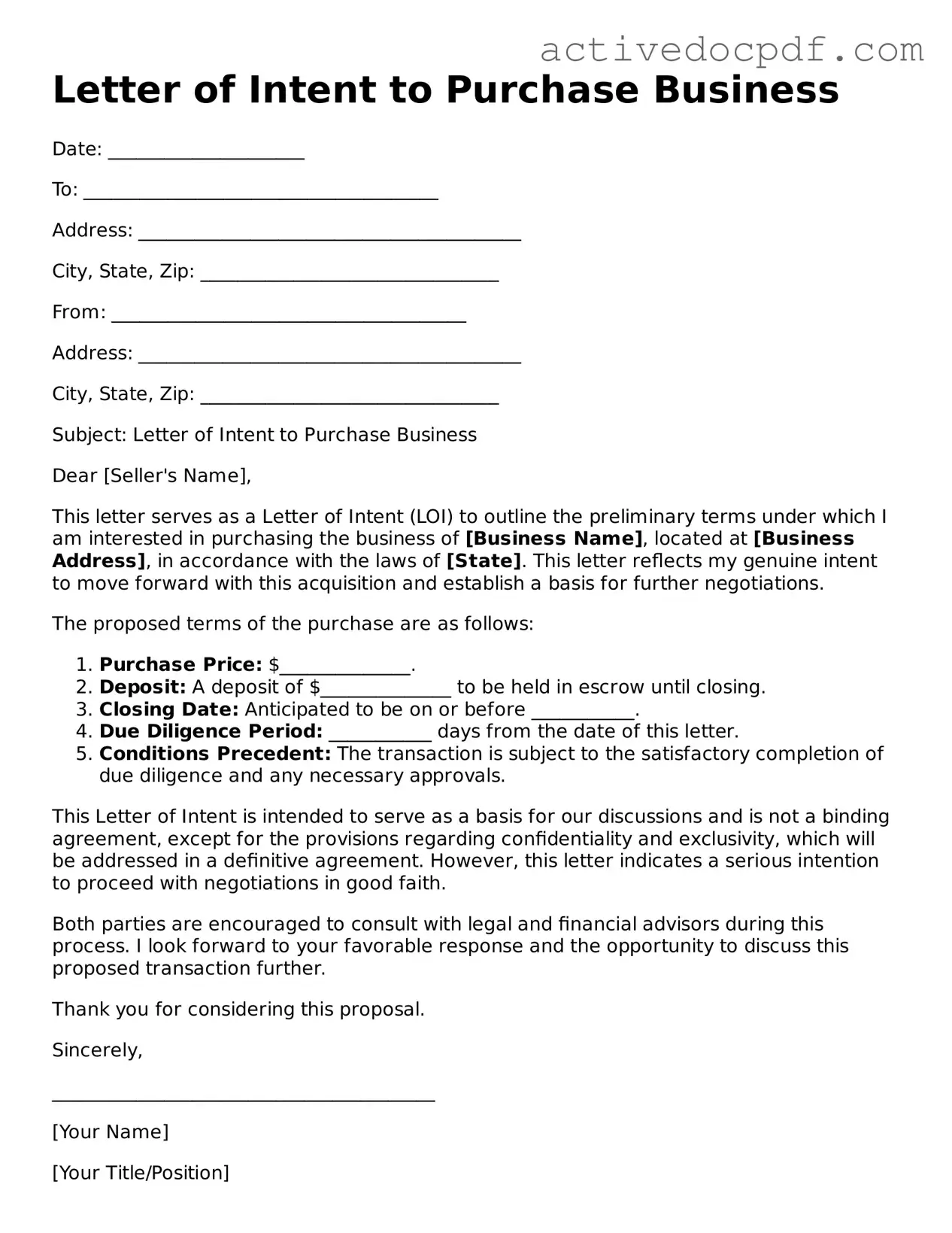What is a Letter of Intent to Purchase Business?
A Letter of Intent (LOI) to Purchase Business is a document that outlines the preliminary agreement between a buyer and a seller regarding the sale of a business. It serves as a starting point for negotiations and typically includes key terms such as the purchase price, payment structure, and timelines. While it is not legally binding, it indicates the serious intent of the buyer to proceed with the purchase.
What should be included in a Letter of Intent?
An effective Letter of Intent should cover several important elements:
-
Parties Involved:
Clearly identify the buyer and seller.
-
Business Description:
Provide a brief overview of the business being sold.
-
Purchase Price:
State the proposed price and any conditions related to it.
-
Payment Terms:
Outline how the payment will be made (e.g., lump sum, installments).
-
Due Diligence:
Specify the timeframe for conducting due diligence.
-
Confidentiality Clause:
Include terms that protect sensitive information.
-
Exclusivity Period:
If applicable, mention any exclusivity agreements during negotiations.
Is a Letter of Intent legally binding?
Generally, a Letter of Intent is not legally binding. However, certain sections, such as confidentiality and exclusivity clauses, may be enforceable. It’s crucial to clarify which parts of the LOI are intended to be binding and which are not. This distinction helps prevent misunderstandings as negotiations progress.
Why is a Letter of Intent important?
A Letter of Intent is important because it lays the groundwork for the transaction. It helps both parties clarify their intentions and expectations before diving into more detailed agreements. By addressing key terms early on, it can save time and reduce the likelihood of disputes later in the process.
How does a Letter of Intent affect the negotiation process?
The Letter of Intent can significantly impact the negotiation process. It serves as a roadmap, guiding discussions and helping to align both parties' interests. By establishing a mutual understanding of the main terms, it can facilitate smoother negotiations. However, if either party feels that the LOI misrepresents their intentions, it may lead to complications.
Can a Letter of Intent be revised?
Yes, a Letter of Intent can be revised. As negotiations progress, either party may propose changes to the terms outlined in the LOI. Open communication is essential during this process. Both parties should be willing to discuss modifications to ensure that the document accurately reflects their intentions and agreements.
What happens after a Letter of Intent is signed?
Once a Letter of Intent is signed, the next steps typically involve conducting due diligence and drafting a formal purchase agreement. During due diligence, the buyer will investigate the business's financial, legal, and operational aspects. This phase is crucial for confirming the information provided by the seller. After due diligence is complete, both parties can move forward with finalizing the purchase agreement, which will be a legally binding document.
